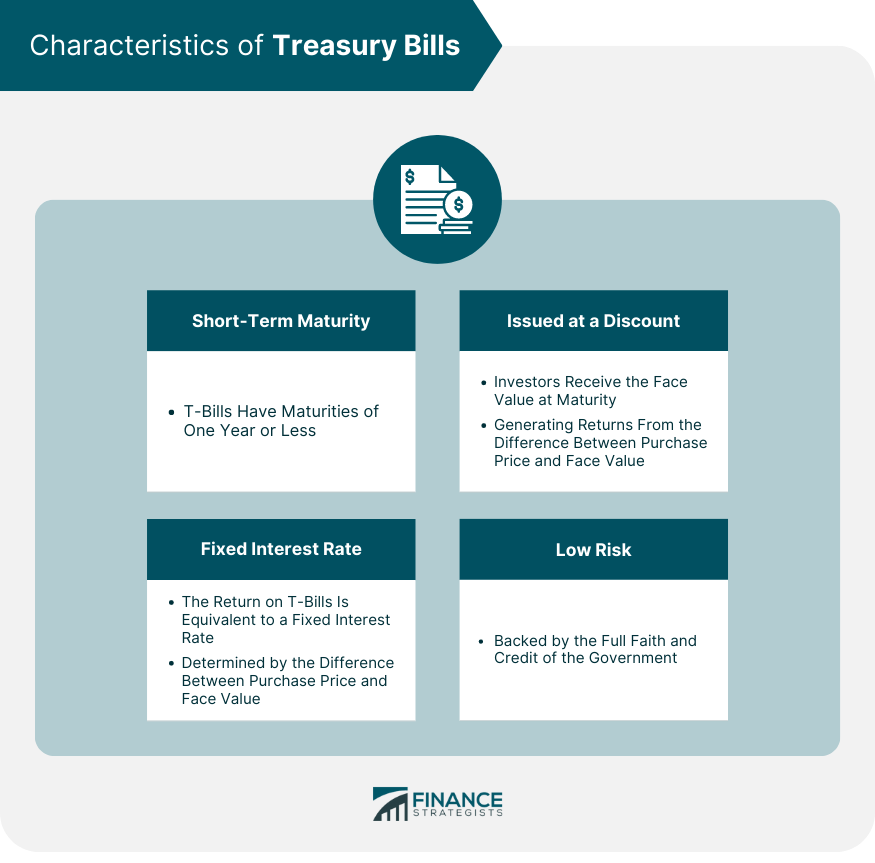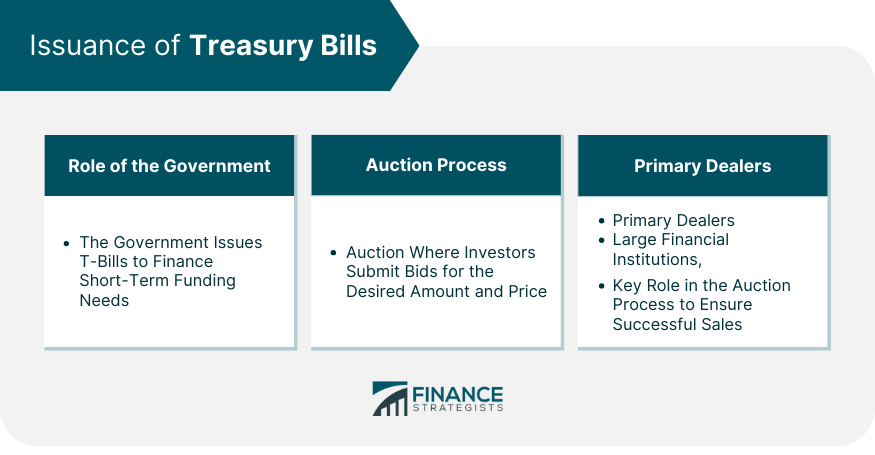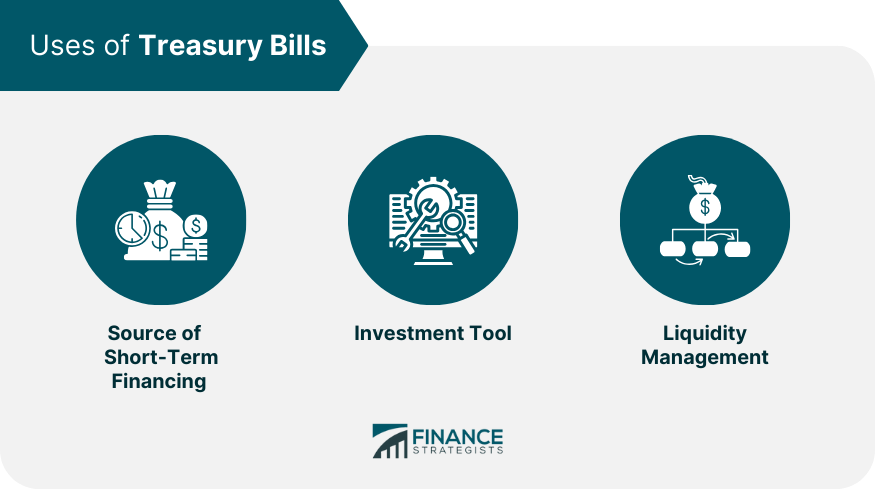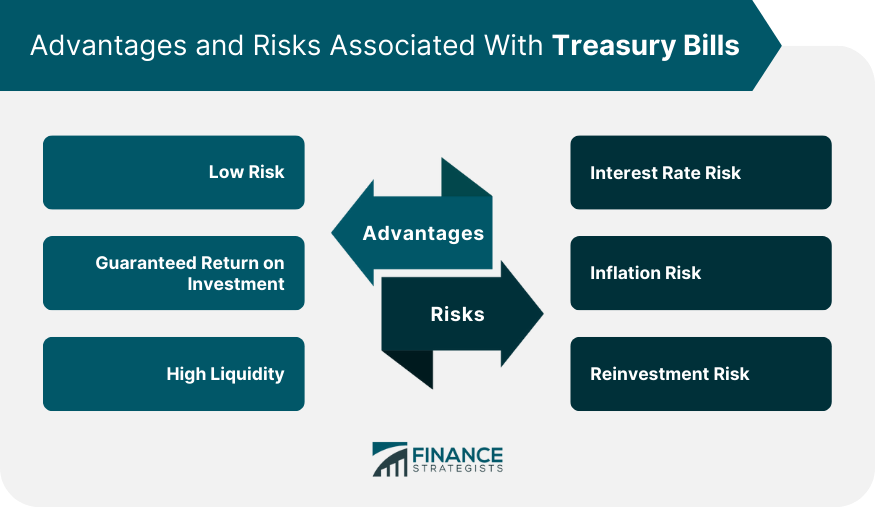US Treasury Bills, commonly known as T Bills, are certificates of debt issued by the United States government that have a maturity date of one year or less. Because the lifespan of a T Bill is so short, they do not incur regular interest payments. Instead, the government sells Treasury Bills at a discount from their face value and pays the full face amount upon maturity. Explore Investment Options with a Vetted Financial Advisor. Click here.
I'm Taylor Kovar, a Certified Financial Planner (CFP), specializing in helping business owners with strategic financial planning. A couple approached me with a desire for a safe, short-term investment option. I introduced them to Treasury Bills (T-Bills) – a perfect fit for those wary of economic fluctuations such as inflation. They opted for a six-month T-Bill and found not only financial security but also a lesson in adjusting investment strategies to suit changing economic tides. Contact me at (936) 899 - 5629 or [email protected] to discuss how we can achieve your financial objectives. WHY WE RECOMMEND: IDEAL CLIENTS: Business Owners, Executives & Medical Professionals FOCUS: Strategic Planning, Alternative Investments, Stock Options & Wealth Preservation The difference between the discounted sale price and the face value the Bill acts as the interest paid to investors for owning a Treasury Bill. For example, if a 26-week, $1000 Treasury Bill is discounted to $980, then the owner of the Bill will stand to make a $20 profit. $20 is 2.04% of $980, but 4.08% when prorated annually. T Bills normally are sold in denominations of $1000 all the way up to 5 million dollars. In contrast with other U.S. Treasury Notes and Bonds, Common T Bill maturities are 4, 8, 13, 26, and 52 weeks. The longer the maturity date, the higher return the investment will have. For the government, they are a means to meet short-term financing needs without resorting to printing more currency, which can lead to inflation. For investors, they offer a safe and secure investment option. T-Bills also play a significant role in the financial markets, providing a benchmark for interest rates and helping the central bank manage the money supply. One of the defining characteristics of T-Bills is their short-term maturity. Typically, these instruments mature in one year or less, making them suitable for investors looking for short-term investment opportunities. Instead of receiving periodic interest payments, investors receive the face value at maturity, and the difference between the purchase price and the face value serves as the return on investment. The return on a T-Bill is determined by the difference between the purchase price and the face value, effectively acting as a fixed interest rate. Despite not offering periodic interest payments, the gain realized at maturity is equivalent to having earned interest. T-Bills are generally considered low-risk investments because they are backed by the full faith and credit of the government. This assurance makes them appealing to risk-averse investors seeking to preserve their capital while earning a modest return. The government plays a crucial role in the issuance of T-Bills. Specifically, the Treasury Department or the central bank is responsible for issuing these instruments to help finance the government's short-term funding needs. T-Bills are typically issued through an auction process. Investors submit bids for the amount they're willing to buy and the price they're willing to pay. The bills are then allocated starting with the highest bids until all the bills are sold. Primary dealers, which are large financial institutions, play a key role in the auction process. They are required to participate in each auction and make competitive bids, ensuring the successful sale of each issuance. One of the primary uses of T-Bills is to provide short-term financing for the government. The proceeds from the sale of T-Bills can be used to fund government operations or pay down existing debt. T-Bills also serve as an investment tool for both individuals and institutions. Because of their low risk profile and guaranteed return, they are a popular choice for investors looking to preserve capital and earn a modest return. Banks often use T-Bills for liquidity management. By holding T-Bills, banks can quickly and easily convert these assets into cash, helping them meet their short-term liquidity needs. The primary advantage of investing in T-Bills is their low risk. Because they are backed by the full faith and credit of the government, the risk of default is virtually non-existent. T-Bills offer a guaranteed return on investment. While the return may be modest compared to riskier assets, it is certain – the investor will receive the face value of the T-Bill at maturity. T-Bills are highly liquid. They can easily be sold in the secondary market, providing investors with quick access to cash if needed. The widespread acceptance and recognition of T-Bills as a secure and reliable investment instrument contribute to their high liquidity Despite their low-risk nature, T-Bills are not entirely without risk. One such risk is interest rate risk. If interest rates rise, the value of a T-Bill can fall, as investors can get a higher return from newly issued T-Bills. Inflation risk is another potential downside of investing in T-Bills. If inflation rises, the purchasing power of the return from a T-Bill can be eroded. This can particularly impact long-term investors. Reinvestment risk is the risk that when a T-Bill matures, the proceeds may have to be reinvested in a less favorable investment environment. For instance, interest rates may have fallen, providing a lower return on the reinvested funds. Because Treasury Bills are backed by the full faith and credit of the US government, T-Bills are considered to be one of the safest investment vehicles available. Because of the guarantee of profit, T Bills usually offer lower yields than equivalently priced investments, such as traditional bonds. Treasury Bills (T-Bills) are short-term debt instruments issued by the US government with a maturity date of one year or less. They are sold at a discount from their face value and provide a fixed interest rate. T-Bills are characterized by their low risk, making them a safe investment option for risk-averse individuals and institutions. They serve as a source of short-term financing for the government and offer liquidity management for banks. The advantages of investing in T-Bills include their low risk, guaranteed return on investment, and high liquidity. However, T-Bills are not without risks, including interest rate risk, inflation risk, and reinvestment risk. Despite lower yields compared to other investments, T-Bills are highly regarded due to their backing by the US government, ensuring their safety and reliability.What Are Treasury Bills (T-Bills)?
Read Taylor's Story

Fee-Only Financial Advisor
Certified Financial Planner™
3x Investopedia Top 100 Advisor
Author of The 5 Money Personalities & Keynote Speaker
Importance of Treasury Bills
Characteristics of Treasury Bills
Short-Term Maturity
Issued at a Discount
Fixed Interest Rate
Low Risk

Issuance of Treasury Bills
Role of the Government
Auction Process
Primary Dealers

Uses of Treasury Bills
Source of Short-Term Financing
Investment Tool
Liquidity Management

Advantages of Investment in Treasury Bills
Low Risk
Guaranteed Return on Investment
High Liquidity
Risks Associated With Treasury Bills
Interest Rate Risk
Inflation Risk
Reinvestment Risk

Treasury Bills (T-Bill) Rates
Conclusion
iTreasury Bills (T Bills) FAQs
T-bill stands for a treasury bill.
US Treasury Bills, commonly known as T-Bills, are certificates of debt issued by the United States government that have a maturity date of one year or less.
Because the lifespan of a T-Bill is so short, they do not incur regular interest payments.
Because treasury bills are backed by the full faith and credit of the US government, T-Bills are considered to be one of the safest investment vehicles available.
Because of the guarantee of profit, T Bills usually offer lower yields than equivalently priced investments, such as traditional bonds.
True Tamplin is a published author, public speaker, CEO of UpDigital, and founder of Finance Strategists.
True is a Certified Educator in Personal Finance (CEPF®), author of The Handy Financial Ratios Guide, a member of the Society for Advancing Business Editing and Writing, contributes to his financial education site, Finance Strategists, and has spoken to various financial communities such as the CFA Institute, as well as university students like his Alma mater, Biola University, where he received a bachelor of science in business and data analytics.
To learn more about True, visit his personal website or view his author profiles on Amazon, Nasdaq and Forbes.















